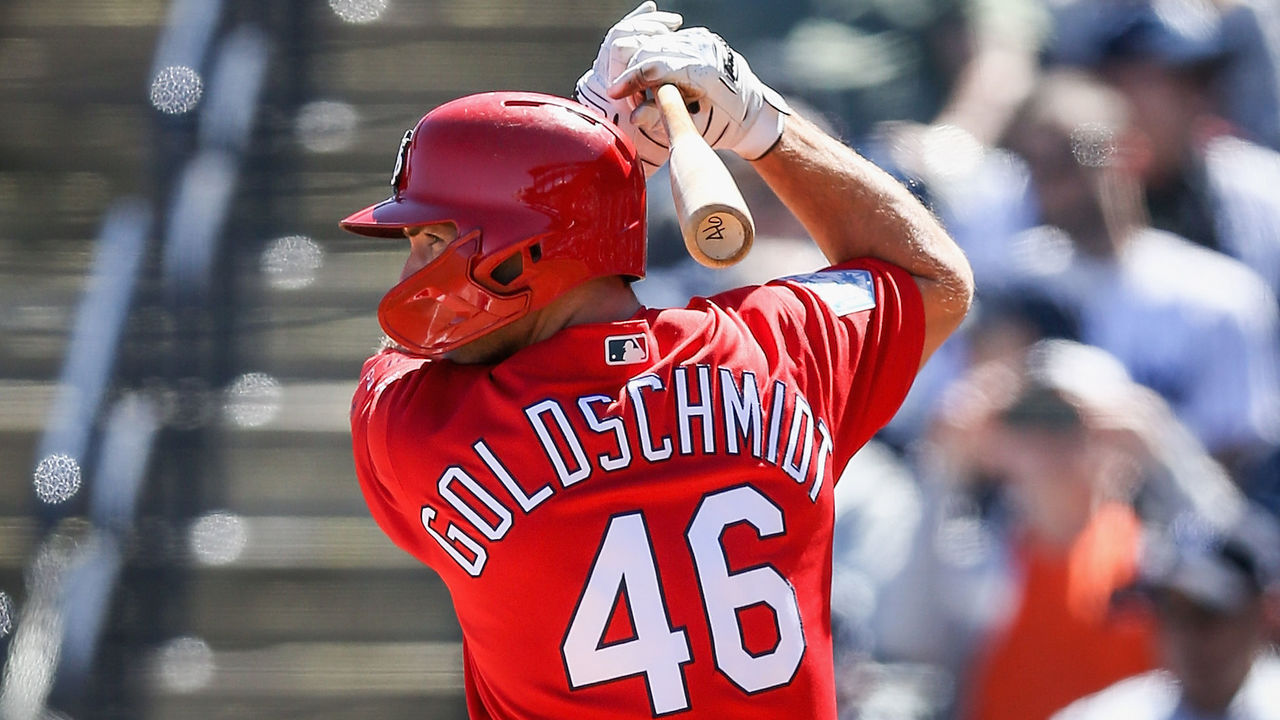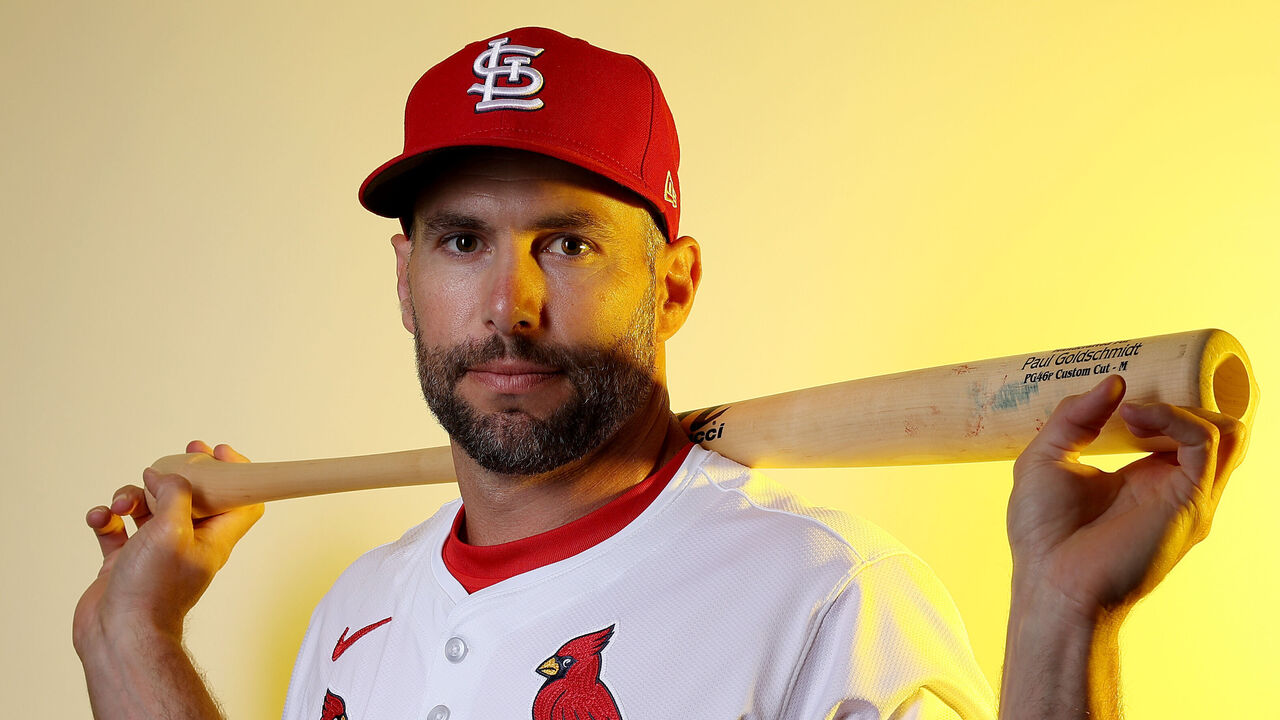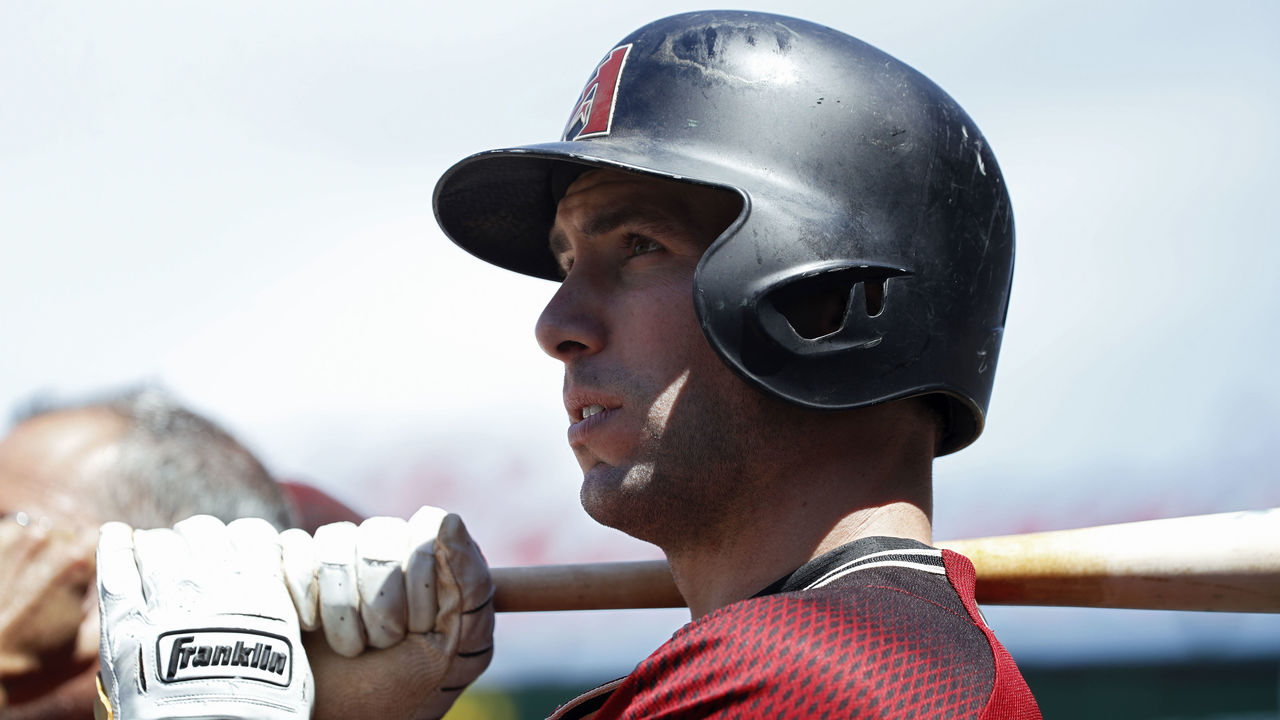Paul Goldschmidt's discovery underscores the art of scouting
Missing on Paul Goldschmidt still bothers Matt Blood.
Long before Blood became the Baltimore Orioles' director of scouting and player development, he was an area scout with the St. Louis Cardinals. Blood saw Goldschmidt in college and wrote up a report, but thought him a rather unremarkable prospect.
Goldschmidt turned out to be a regular All-Star with a potential Hall of Fame case. But Blood was hardly alone in his misidentification.
As an eighth-round draft pick in 2009 by Arizona, Goldschmidt's produced 62.6 bWAR, hit 361 career homers (he ranks third among active players in both stats), and owns an .893 career OPS (ninth). In our series on the best 25 players of the last 25 years, he came in at No. 19.
Among position players drafted in the last quarter century, only Albert Pujols was selected later and produced more WAR.

How did so many scouts miss?
Blood believed there was a great scouting story to be told. How was Goldschmidt identified by the Diamondbacks while playing at unheralded Texas State University? Who was the scout who first identified him? What did he see?
The scouting profession is coming under more and more pressure. Baseball America documented the trend in scouting department cuts in recent years, and it's continued this year: the White Sox, Red Sox, and Cubs recently announced scouting layoffs.
Scouting's being disrupted by technology, like so many other professions. In baseball, the wealth of data captured about players is supplanting the art of being a scout. Goldschmidt might be the kind of scouting find that occurs less often.
But advances in data collection and analysis still can't tell us much about the person.
Goldschmidt's scouting story shows the human element still matters, especially in identifying a key trait that unlocks potential.
In spring 2009, Tom Allison, then the D-Backs' scouting director, was in Texas visiting with scouts and checking on prospects. Trip Couch, one of the club's area scouts, had a player he wanted Allison to see.
"I said, 'We're going to go down to Texas State and watch this guy play,'" said Couch, now an assistant coach with the University of Arizona baseball team. "Then we're going to go to dinner with him after that."
Texas State's campus in San Marcos is about an hour's drive northeast of San Antonio.
"Paul Goldschmidt doesn't happen without Trip Couch," Allison said. "He was so adamant I meet the player because of how special the makeup was."
Goldschmidt wasn't high up on most teams' draft boards, especially as MLB teams were already beginning to devalue first basemen in the draft. (Only two prospects listed as first basemen were selected in the first six rounds of this year's draft; four were taken in the top five rounds last year.)
Goldschmidt was viewed as a bat-only prospect competing against inferior pitching in the Southland Conference. There were questions about his unorthodox swing and whether he could hit pro fastballs. He was built differently then, too, 30 pounds heavier than his 2024 playing weight.
"If you look at his draft year, if you look at his numbers, there was a lot of big slug and home runs and all of those things put in place," Allison said. "But it was always framed as, 'Oh, he plays in a hitter's park, a bandbox, the wind blows out.' Everything was picked apart instead of really getting to know the player."

Couch's contrarian belief: Goldschmidt's bat was real, and he'd work to reach whatever ceiling he had. Couch's conviction was rooted in knowing Goldschmidt well.
While Couch, a Houston-area native, worked as an area scout with the D-Backs (2002-10), he also volunteered as a coach with the Kyle Chapman baseball academy, a collection of travel teams in suburban Houston. That's where he got to know Goldschmidt and his family (two younger brothers played in the program, too).
Jameson Taillon, Robbie Grossman, and James Loney are also alumni of the program.
"(Couch) was almost like a mentor, another coach," Goldschmidt said. "I knew he worked for the Diamondbacks, but our relationship was so much more than that. (He) was a guy I could call and ask for advice. Same with my dad and him, and same with my brothers if they needed anything."
Couch learned over time in scouting what baseball makeup was and why it was so critical.
"Larry Corrigan, a Hall of Fame scout, taught me this in my first year of scouting. He said, 'Trip, tell me what makeup is.' And I told him all this stuff," Couch said. "'That's all great. Taking Mrs. Johnson's groceries across the street for her, that's one type of makeup. But baseball makeup is about being able to compete, to deal with adversity - that's a separate thing.' Paul had both. He'd take Mrs. Johnson's groceries, and he'd also hold himself accountable.
"It's about guys (who) can deal with failure. Failure didn't make him give up. He wanted information. He could take you telling him the truth, which is a lost art. People don't like to hear the truth."

Goldschmidt struggled as a freshman at Texas State. He hit only one home run. But he kept working through failure.
He hit 17 homers as a sophomore, and 18 as a junior, along with overall improved offensive numbers, when he became the first to repeat as Southland Conference player of the year since Ben Broussard in the late '90s.
It was during his junior year that Allison and Couch made the trip to San Marcos. Goldschmidt and Allison bonded over dinner at a local restaurant.
Allison grew up in Alaska, where Goldschmidt played in a wooden-bat league the previous two summers. Goldschmidt wasn't selected for the top collegiate wooden-bat league in Cape Cod.
"They connected over the Moose Dropping Festival, some deal they have up there in Alaska,” Couch said. (The festival once featured a competition where moose droppings were painted, numbered, and tossed from a helicopter to a target.)
"It wasn't like an interview, it was very informal," Goldschmidt recalled of the evening.
Said Couch: "Tom gets in the car after dinner and says, 'You're a little light on this makeup grade - you only have an 80 on it.'"
Eighty's the highest possible scouting grade in baseball.

"From that day forward, Tom would continually send our scouts in," Couch said. "It all started (with) that dinner with him, getting to see a glimpse of what I knew about the human being."
No other team was in on Goldschmidt like Arizona because no other team knew him as well. And while it's rare for any scout to have such familiarity with one prospect, it's only through this human intelligence gathering that such conviction can be forged.
Couch attended the 2009 Southland Conference tournament in Corpus Christi, but mostly to see if any other scouts were tracking Goldschmidt.
Some scouts - like Blood - did stop in to see Goldschmidt during his junior year but there were never any follow-up visits.
As the draft approached, it was difficult to know where Goldschmidt ranked on rivals' draft boards, if at all.
Couch also developed a relationship with another important voice in Arizona's draft room: regional cross-checker Steve McAllister.
"When you're in that (draft) room, a lot of the area scouts aren't in there with you, so they have to have an advocate," Allison said. "Steve was such a big advocate. 'Hey, don't let (Goldschmidt) get out of sight. Let's consider him.'"
McAllister began advocating for Goldschmidt after the first 150 picks were made. In the eighth round, with the 246th pick a few selections away, a debate began over the merits of Goldschmidt and pitcher Chase Anderson.
Goldschmidt was at home with his family in Houston. Back then, the draft wasn't televised. Only one team was in contact: Arizona.
As Diamondbacks officials debated, Couch called Goldschmidt. "He said they were thinking about drafting me," Goldschmidt said.
Couch said to stay by his phone.
A minute later, another call: Goldschmidt was officially a Diamondback.
Goldschmidt's makeup got him drafted and it was also key to maximizing his physical gifts.
Early in his pro career, Goldschmidt changed his diet and adopted a new workout regimen with help from his wife, Amy, a varsity golfer at Texas State interested in nutrition. His stockier build became more athletic.
"When you're a college kid, you have no money for diet and that stuff. It wasn't like I was lazy," Goldschmidt said. "After my rookie year, I thought, 'Man, I'm not as athletic as I think I am, as I need to be.'"

For Couch, good baseball makeup also means honest self-evaluation.
After Goldschmidt entered the system, Diamondbacks minor-league coaches raved about his attention to detail, from hitting drills to becoming a better baserunner.
He transformed into a well-rounded player after appearing to be a limited athlete in college. Since his debut in 2011, he's led all MLB first basemen in steals (167), and ranks first in FanGraphs' baserunning value. No one had those projections on their 2009 scouting reports.
"(Goldschmidt was drafted) at a certain body size, and transformed himself from a very below-average runner to one of the best baserunners I've been around," Allison said. "Those are the things I'll always give credit for to Trip - identifying the human traits of what Paul wanted to become."
Goldschmidt knew he wasn't a finished product when he was drafted - far from it.
"I know for me, all the way back to high school, I was going to do everything I could to be the best player I could be," he said. "It wasn't, 'Oh, I want to play in the major leagues.' It was, 'This is what you do if you're going to try and play baseball in high school, and try and get a college scholarship.' This is what my parents taught me: You give everything you have. You don't just go through the motions. You work hard. You do everything you can, and that's what I've continued to try and do my whole career."
That mindset led Goldschmidt to his first and only MVP award in his age-34 season in 2022, after spending the offseason adopting a new training regimen. Always focused on detail, he even had all 60 or so bats he planned to use that season tested, selecting for game use the ones that generated the highest exit velocity.
Couch doesn't think understanding the human element can be replaced by data.
"I'm not one of those old-school types who thinks all the new stuff is dumb. I'm not that guy (who) thinks the game's gone to hell in a handbasket because we use analytics," Couch said.
"I would say, though, that (makeup's) the one thing that's really hard for the 100% analytics person to wrap their head around, that does matter. You're still picking human beings and they have emotions. It's just life."
Travis Sawchik is theScore's senior baseball writer
HEADLINES
- MLB Roundtable: Should Ohtani pitch in playoffs, most impressive teams, and more
- Yankees clinch 7th postseason berth in last 8 seasons
- Mariners' Rodríguez on baserunning gaffe: Thought it was a dead play
- Brewers win NL Central for 3rd time in 4 seasons
- Altuve thinks Astros will re-sign Bregman: 'Need to make it happen'